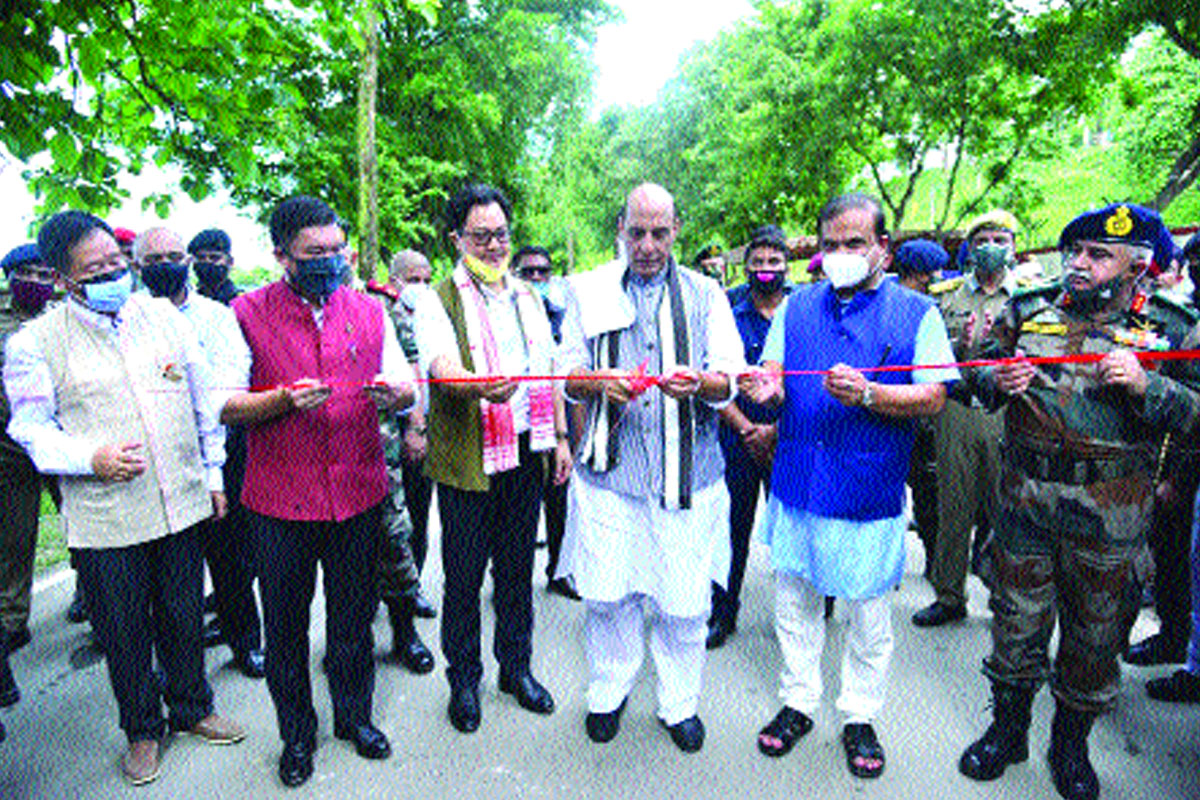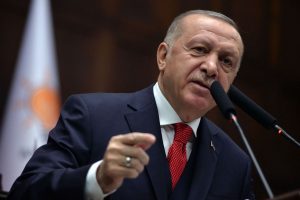The recent visit of Union defence minister Rajnath Singh to the North-eastern region was significant as Chinese forces at the borders continue to get reinforced. Singh dedicated 12 roads, built by the Border Roads Organisation, to the nation. Attending a meet at Lakhimpur locality in eastern Assam on 17 June, he inaugurated the 20 km long-Kimin-Potin (double lane) road along with nine other roads in Arunachal Pradesh and one each in the Union Territories of Ladakh and Jammu and Kashmir.
The projects were implemented by the BRO under the Arunank, Vartak, Brahmank, Udayak, Himank and Sampark initiatives. Speaking on the occasion, Singh commented that the new roads hold strategic and socio-economic importance as they would play an important role in strengthening national security as well as promoting development in the region, which is surrounded by five foreign countries, namely Nepal, Bhutan, Tibet-China, Myanmar and Bangladesh. Better road connectivity always helps in mobilising troops and necessary equipment along with ration, medicines and other goods to strategically important locations, said Singh. He also said that the projects were part of the Centre’s Act East policy where special emphasis is given on the overall development of the Eastern border areas.
Advertisement
“A strong North-east is essential for India’s security and progress,” said Singh at the meeting, where Assam chief minister Himanta Biswa Sarma, Arunachal Pradesh chief minister Pema Khandu, Union minister Kiren Rijiju, India’s Chief of Defence Staff Bipin Rawat and BRO director general Rajeev Chaudhry, among others, were present. Jitendra Singh, the Union minister responsible for development of the North-eastern region that acts as a gateway to South-east Asian nations, was virtually present on the occasion.
Singh did not forget to pay tributes to soldiers in the line of duty who showed exemplary courage during the Galwan river valley incident last year against the aggressive Chinese Armed Forces. Saluting the brave soldiers who laid down their lives for the nation, he asserted that India being a peace-loving nation had never shown hostile intent against any country, but New Delhi would not tolerate any misadventures towards its sovereignty and integrity.
It was a year since the Galwan valley conflict in Ladakh on 15 June and the Indian Army paid homage to the supreme sacrifice of its personnel by laying a wreath at the Leh War Memorial. A defence statement mentioned the bravery of 20 soldiers, who laid down their lives, without a single shot being fired, to defend the nation, and also caused heavy casualties on the opposite side in the clash.
Beijing initially did not acknowledge any casualty or injury to People’s Liberation Army members in the high altitude (over 17,850 feet) clash. New Delhi, however, officially declared its casualties while preventing the Chinese misadventure. Accordingly, all the martyred soldiers were sent to their respective home localities for cremation with full national honours.
China admitted only in February this year that five military officers and soldiers were killed in the Galwan face-off. Unconfirmed sources, however, claim that at least 45 PLA members were killed in the conflict and they were all buried at a nearby locality. The Chinese media, under strict control of Beijing, remained silent over the matter.
Recently, the Global Times reported an event where Chinese citizens paid tributes to their soldiers commemorating the Galwan episode. Quoting a number of netizens, the government-controlled media outlet reported the valour of their soldiers by saying that Chinese people and history would never forget the heroes for protecting the country’s sacred borderland.
The violent India-China stand-off at the Galwan valley reminded people of both nations about the 1962 War. Soon after the Communist government captured Tibet in 1959, the 14th Dalai Lama had to flee and temporarily settle in Dharamshala in Himachal Pradesh. Han Chinese soldiers invaded many parts of Arunachal Pradesh including the sacred Tawang valley. PLA troops even arrived in Tezpur town of Assam.
Claiming a large area of Arunachal Pradesh as South Tibet, the Beijing administration justified the invasion. Unprepared Indian forces under the leadership of then defence minister Vengalil Krishna Kurup Krishna Menon in Jawaharlal Nehru’s central cabinet suffered heavy casualties.
After that conflict, another confrontation between the two countries happened in the Pangong area during August last year. Earlier, several such Chinese contraventions were reported between 2016 and 2018 including the infamous 2017 Doklam logjam. By now, 11 rounds of military talks between India and China have been organised, but all along, Chinese soldiers remain active in all disputed regions.
Beijing recently launched the newly tracked 435-km Lhasa-Nyingchi rail line, a dream project of President Xi Jinping and the ruling Communist Party of China ahead of its centenary celebrations on 1 July. The fully electrified high-velocity rail line connects the capital of Tibet and goes to around 17 kilometres off Arunachal Pradesh’s northern border up to Nyingchi town, where some battalions of the PLA are stationed. The Chinese regime has also built a highway linking Lhasa with Nyingchi airport.
Satellite imagery confirms that China has lately undertaken various infrastructure projects near the borderline. They have constructed some permanent structures in the Ladakh area and rehabilitated many villages in the Doklam plateau. A Chinese village with hundreds of dwellers has also been reported in the disputed Arunachal Pradesh border areas. All such developments would enable the PLA to mobilise troops and military equipment faster, as and when needed.
A few weeks ago, exiled Tibetan leader Lobsang Sangay called the term “Indo-China border conflict” a misnomer. Speaking to a group of journalists in Guwahati, the former head of the Dharamshala-based Central Tibetan Administration argued that many Indians believe that Tibet is a part of China and they prefer to use the term, but in reality China was never a neighbour to India.
“When Tibet was an independent country, only 75 Indian soldiers guarded the entire border as more troops were not needed,” said the Harvard University-educated politician, while adding that the same border presently needs to be guarded by thousands of soldiers. It has now turned into the Indo-China border and compelled New Delhi to enhance Budgetary allocations to safeguard its Northern Himalayan front, said Sangay.
Facing the heat, New Delhi has also reinforced its troops with enhanced artillery in the Eastern and Northern international border areas by deploying over 50,000 armed personnel. Moreover, the Central government has emphasised on improved military infrastructure in such localities, where the government-owned BRO has been entrusted with enhanced annual Budgetary allocations and higher responsibilities.
The writer is the Guwahati-based Special Representative of The Statesman.
















